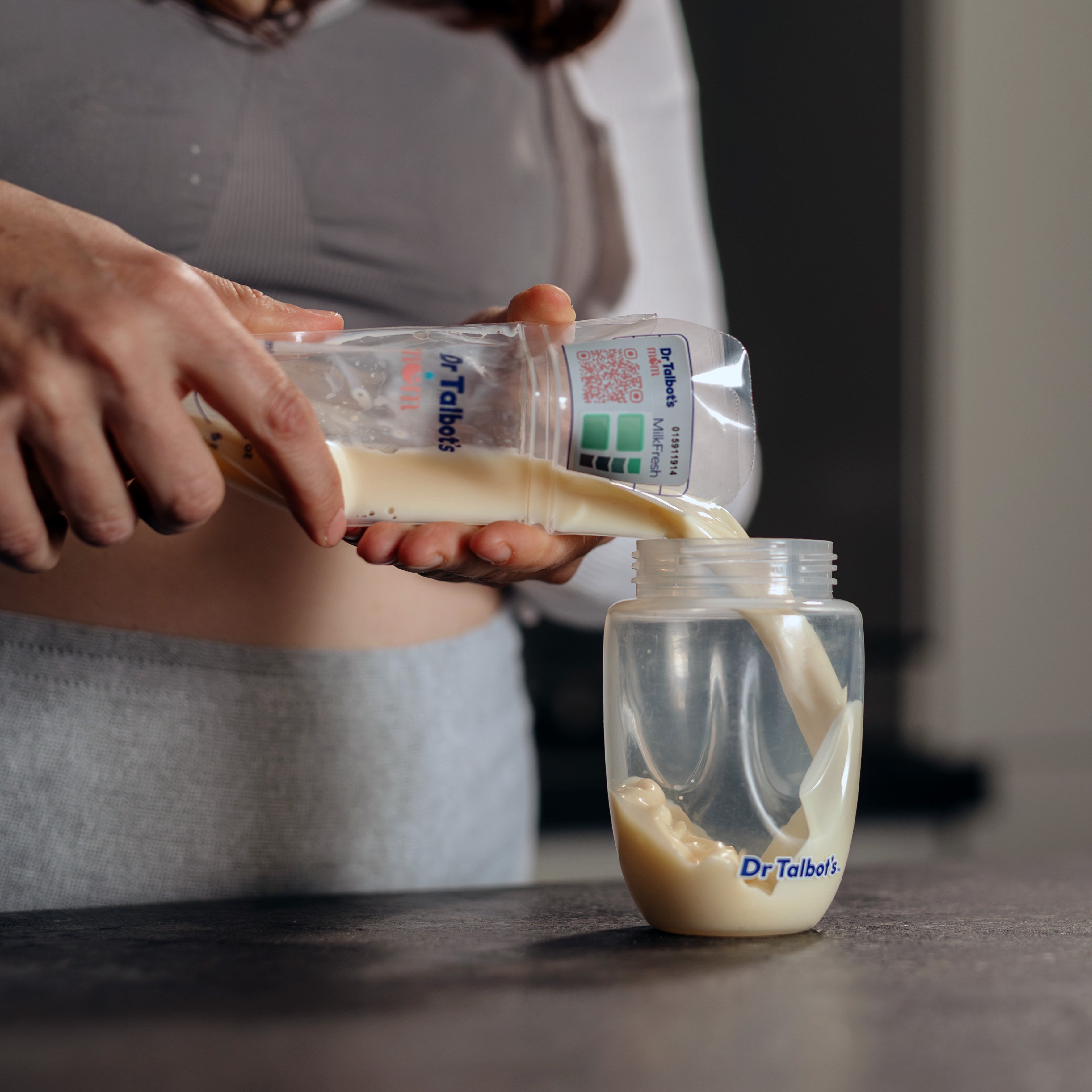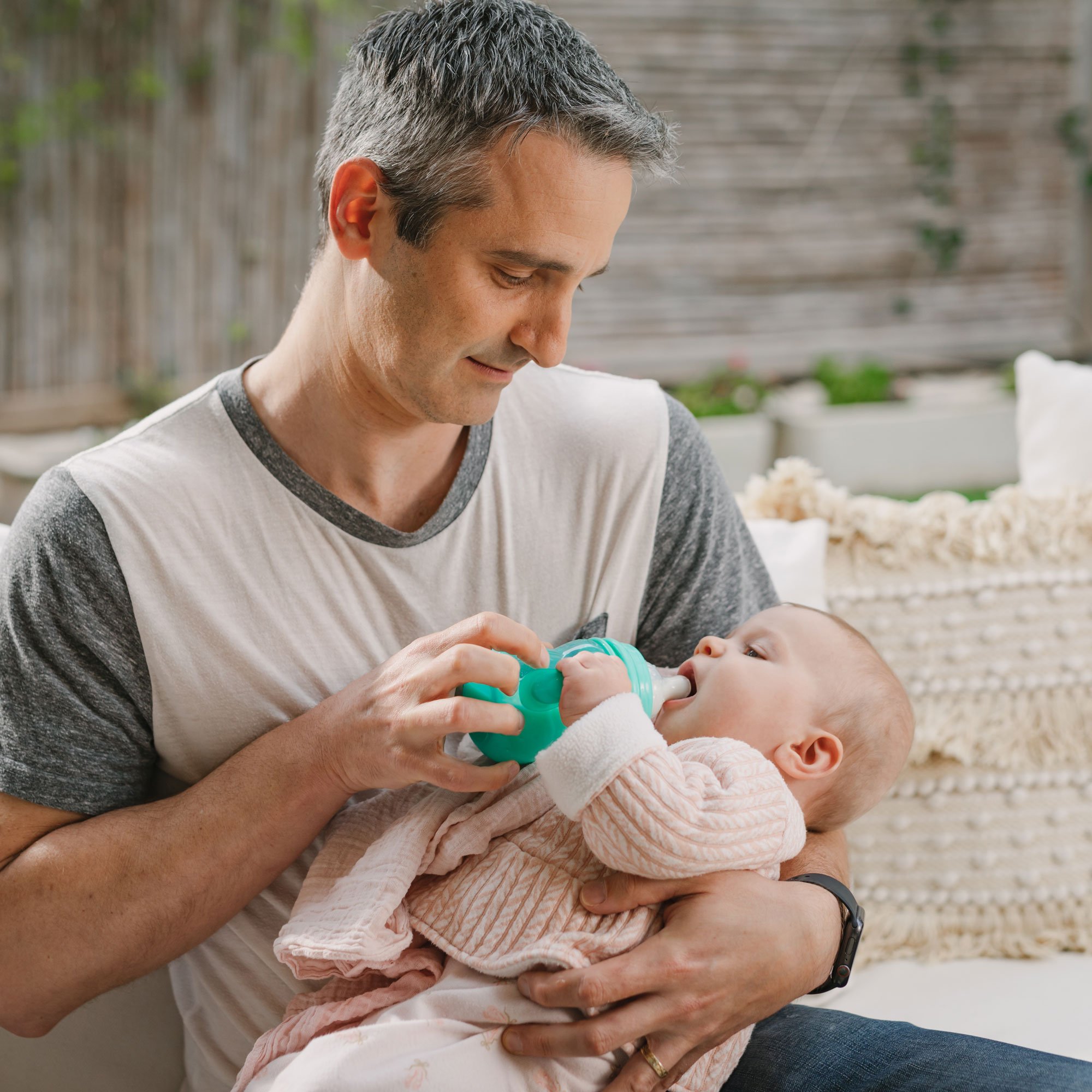When using frozen breast milk, proper thawing and warming are essential.
Breast milk should never be heated above 104°F (40°C), as overheating compromises its nutrients and quality.
Overheating can also cause curdling, where the milk changes from a smooth liquid to a lumpy, solid state, making it unsafe for consumption. This article will explore safe methods for thawing and warming frozen breast milk.
Why It’s Important to Warm Up Frozen Breast Milk Properly
Breast milk’s nutritional value and quality are maintained at their best when properly thawed and warmed gently.
Properly warming breast milk helps preserve its benefits. However, overheating breast milk can reduce its nutritional value and create a scalding hazard for your baby. Always check the temperature before feeding by dropping a few drops on your wrist, ensuring the milk is lukewarm and not hot.

How to Warm Up Frozen Breast Milk
To guarantee proper breast milk warming, follow the following steps:
Thaw the Milk: Thaw frozen breast milk gradually in the refrigerator for 12 to 24 hours. If you need the milk faster, put it under running warm water or in a bowl filled with warm water.
Warm the Milk: Use warm water to warm the milk. If you have a bottle warmer, warm it with that. Always test the milk temperature before giving the bottle to the baby.
Swirl the Bottle: Swirling the bottle helps to mix the separated liquids and fats.
How to Warm Up Breast Milk from the Fridge
To warm refrigerated breast milk, place the milk bag or a bottle in a bowl of warm water. After a few minutes, check the temperature by putting a few drops on your wrist, gently swirl the milk, and it's ready for feeding.
While you can also warm breast milk under running warm water, this method uses significantly more water.
A bottle warmer is the ideal choice for the most consistent and even warming, as it provides precise temperature control.
What to Avoid When Warming Frozen or Refrigerated Breast Milk
Never use a microwave to warm refrigerated breast milk. Microwaves destroy breast milk's quality, nutrients, and antibodies. Microwaves also heat the milk unevenly and cause hot spots, which can burn your baby’s mouth.
Breast milk should never be boiled or warmed above 104°F (40°C) so that the essential proteins and antibodies in the milk aren’t destroyed.
To ensure the safety and quality of breast milk for consumption, never refreeze or rewarm milk that has already been thawed.
Tips for Busy Moms
If you know when you will need frozen breast milk, it is best to thaw it in the refrigerator overnight. That way, the quality and nutritional value remain uncompromised.
If you're in a hurry, use the warm water or running warm water method. For added convenience, consider investing in a high-quality bottle warmer. This will make thawing and warming breast milk faster, easier, and more controlled.
Tracking the freshness of breast milk is vital to ensure your baby receives the best nutrition. Label each container with the date and time of pumping, or simplify the process with breast milk freshness sensors for peace of mind.

FAQs:
What is the best way to thaw frozen breast milk?
The best way to thaw frozen breast milk is to put it in the refrigerator for 12 to 24 hours.
How can I warm up breast milk from the fridge?
You can warm breast milk from the fridge by putting it in a bowl of warm water, holding it under running warm water or putting it in a bottle warmer.
Is it safe to use a microwave to warm breast milk?
It is not safe to use a microwave to warm breast milk. Microwaving breast milk can reduce its quality and nutritional value and may create hot spots.
Can I refreeze thawed breast milk if it hasn’t been used?
Once thawed, breast milk should not be refrozen.
How do I check if the milk is at the right temperature for feeding?
Check the milk temperature before feeding by placing a few drops on your wrist. The drops should feel warm, not hot.
Conclusion
Properly thawing and warming breast milk ensures the quality and nutritional value remain at their best.
Remember never to overheat your breast milk or use the microwave for warming. Be patient with the thawing and warming of the breast milk. Practice safe warming methods, like warm water, running warm water, or bottle warmer methods. Always swirl the bottle before feeding and check the temperature of the breast milk.
These steps will help you keep your breast milk preparation and feedings easy and stress-free.